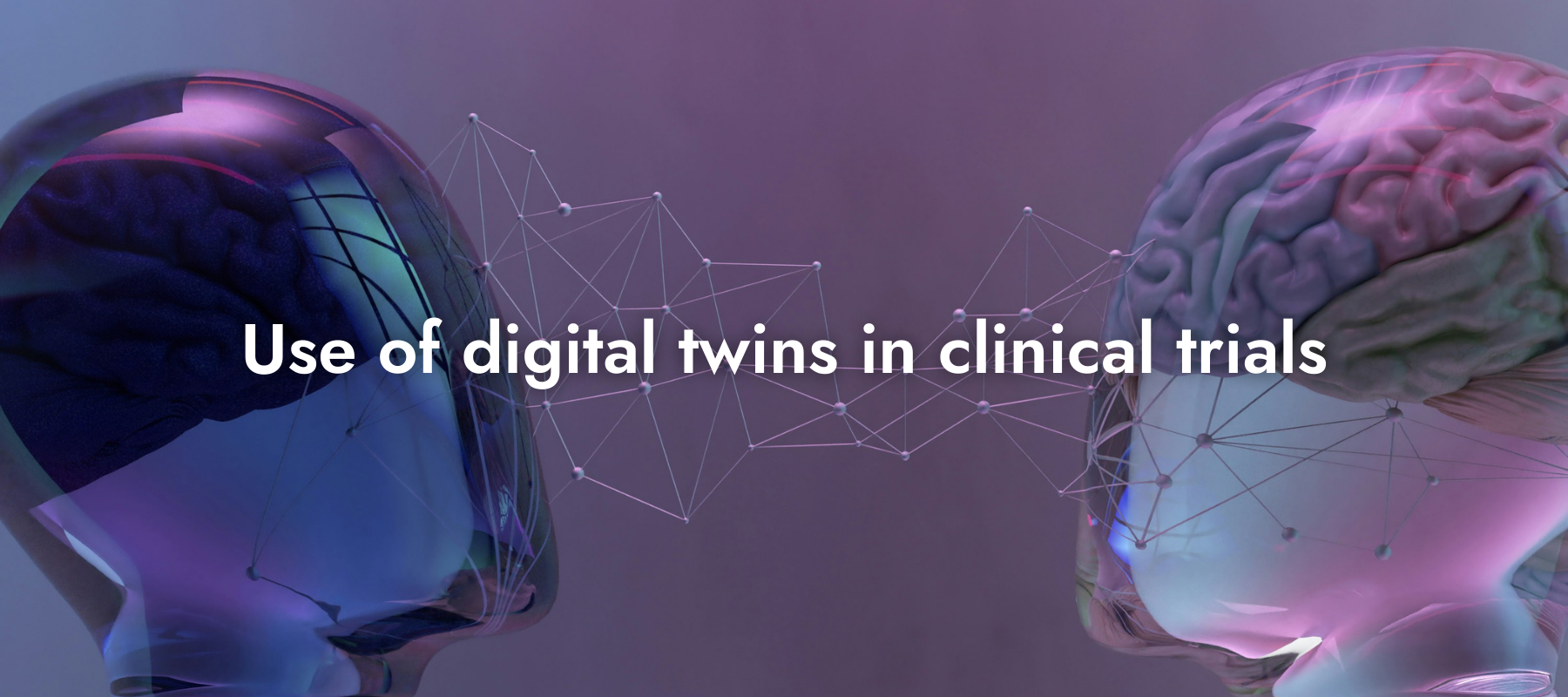Use of digital twins in clinical trials: Twin to win?
The advent of new technology always ushers increasingly complex developments in the ever-evolving landscape of drug development. The uptake of Artificial Intelligence (AI) technologies has been ubiquitous in all areas of drug development, including clinical research where digital health solutions are being employed to increase clinical trial efficiency and decrease the associated time and costs.
Clinical trials are fraught with the resource-intensive hurdles of cost, time, and complexity. A promising application of AI being used to address these issues is digital twins. Digital twins are digital replicas of physical objects or systems connected by bidirectional data and information flow. Popular in the aerospace and manufacturing industries, digital twins are also being used in clinical trials to replicate biological systems or processes to simulate real time biological processes and to model outcomes.
Digital twins can model biological components ranging from cells and tissues to organs and environments in a patient’s body. A digital twin is generated from preexisting data, AI modeling and incorporates real time data to predict outcomes to optimize decision making. These twins are versatile and have several applications, some of which include drug discovery, drug repositioning, personalized treatments based on digital patient profiles, recruitment into trials as virtual patients, in-silico clinical trial design and safety monitoring.
Featured are a small variety of companies demonstrating the creative applications of digital twin technology in clinical trials:
- Unlearn – Unlearn has a platform to generate digital twins aiming to aid in designing more efficient trials, reducing sample sizes, boosting power, and making faster, more confident development decisions. PROCOVA™ is a statistical methodology developed by Unlearn.AI for incorporating prognostic scores derived from trial participants’ digital twins into the design and analysis of phase 2 and 3 clinical trials.
This methodology has been qualified by the EMA and is covered under the FDA’s guidance on Adjusting for Covariates in Randomized Clinical Trials for Drugs and Biological Products as a special case of ANCOVA statistical method.
- BOTdesign – Botdesign has ORIGA, Europe’s first web-based platform for augmenting clinical data with deep learning. It enables healthcare manufacturers and researchers to generate realistic artificial patients, while guaranteeing data confidentiality and regulatory compliance. ORIGA is based on advanced generative AI models called Variational Autoencoders (VAEs) used to create synthetic patients. This can be particularly useful in increasing size and diversity in research especially for rare and underrepresented cohorts.
- Aitia – Aitia has built a causal AI engine (REFS®) that uses high-performance computational power to turn massive amounts of multiomic and patient outcome data into fully realized, unbiased and causal in silico models of human disease called “Gemini Digital Twins” that can be used to discover new causal human drug targets and biomarkers, candidate patient subpopulations for clinical trials, and optimal drug combinations.
- Bayer – Bayer has used digital twins to create virtual trial arms or “external control arms”, which can replace control/placebo arms in some clinical trials. This can help fill evidence gaps e.g., where an RCT (randomized control trial) is not feasible or ethically sound, in addition to reducing costs, overall development time and/or trial recruitment time.
- Sanofi – Sanofi uses quantitative systems pharmacology (QSP) modeling of a disease and available clinical trial data from live patients to create digital twins of the human patients seen in the clinic. All of the available data on disease biology, pathophysiology, and known pharmacology, is taken and integrated into a single computational framework.
Although digital twins can’t fully substitute real humans, they can help streamline clinical trials by reducing costs and timelines. As is the case with any technology there are associated ethical, technological and regulatory risks and challenges. The accuracy and predictive power of a digital twin heavily depend on the quality of input data, and issues with generalizability currently limit scalability. Given their extensive reliance on patient data, digital twins must comply with the varied privacy and security laws globally. Nevertheless, the advancement of AI technologies lends potential for digital twins to revolutionize drug discovery and development even further.


Subscribe Now to the Bio-Startup Standard
Notify me for the next issue!




